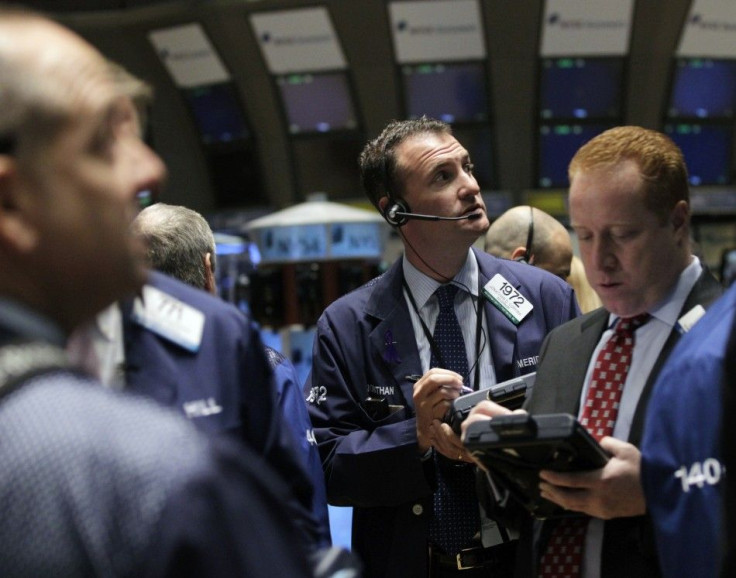U.S. Stock Market: Is Dow 11,000 the Bottom?
Analysis

The tug-of-war between the U.S. stock market's bulls and bears continues, with each side trying to make a compelling case that the data supports their view of the world: the next decarmation line appears to be the Dow 11,000 level.
The market's bulls argue that although the U.S. economy is growing at a tepid rate, private sector lay-offs have peaked, the worst financial and economic news is behind us, and the Dow's recent rise from support at/near 10,800 last week is a signal by institutional investors that better days are ahead.
The market's bears argue the substantially smaller U.S. workforce, stagnant income in many job segments, an economy that's short -- at minimum -- about 14 million full-time jobs, and that lingering problem -- Europe government debt -- means the Dow is sending a false signal, and is headed for a fall, perhaps down as low as Dow 7,700 or 7,800.
Let's do a condensed, cross-methodology analysis to see if we can arrive at an informed investment decision / conclusion regarding where the Dow is headed, through the end of 2011.
Technical Indicators: Bearish. The Dow is firmly bolow the 50-day (12,087) and 200-day (11,994) moving averages -- which is bearish, as those are two toughest averages to break. However, the Dow, as noted, did hold support at/near 10,800.
Fundamental Indicators: Slightly Bearish. So far in the second quarter earnings season, corporate earnings have been adequate-to- slightly-better-than-expected. However, the U.S. economy, as measured by GDP, is growing at a tepid rate. What's more, the economy has not demonstrated that it can create the minimum 150,000 to 200,000 new jobs per month, to lower the nation's high unemployment rate (currently 9.1%).
Monetary Policy: Bullish. Inflation remains low, at the core level (which exludes food and energy prices). That fact, combined with the output gap, means the Fed will at least continue to reinvest the proceeds of the second stage of its quantitative easing policy to help stimulate the economy, 'QE2,' through at least the start of the fourth quarter, and perhaps for longer. Further, the Fed's recent commitment to keep short-term interest rates low for two years -- through mid-2013 -- provides additonal evidence that conventional monetary polciy will remain accommodative, or conducive to business expansion.
Fiscal Policy: Bearish. The U.S. Congress, led by Tea Party-pressured Republican majority in the U.S. House, implemented austerity measures too soon. Deficit reduction and weeding-out needless programs are laudable goals, but reducing the deficit too soon -- especially if spending cuts affect the social safety net and other essential programs -- reduces demand, and could very well increase social problems -- leading to even higher social costs down the road.
Credit Markets: Slighlty Bearish. Credit markets are recovering, but are still strained, with still too many small/medium-sized businesses arguing they're not getting the level of credit they need to expand operations. Home mortgage qualifications terms remain very high. What's more, Europe's sovereign debt situation remains unsettled, with concern about Spain and Portugal, and chatter about a large French bank's exposure to Greek debt.
Conclusion: The view from here argues that the outlook for U.S. stocks and the U.S. stock market is Slightly Bearish for at least the next four months -- through mid-December. The bias is to hold off considering new stocks or adding to current stock positions, at least until mid/late September.
Given the above technical and fundamental indicators, and the seasonal reduction in money flows and trading volume in the summer months, pull-backs in the Dow and S&P 500 are likely to occur through mid-September, and any additional, unexpected sovereign debt problems in Europe could make for a very bumpy Dow. Underscoring, the current stock market is highly selective, and the bias is toward only deploying capital in those clear-winner comapnies with demonstrated business models in established markets.
In sum, bullish U.S. economic data us needed to support the Dow, and currently there is very little.
© Copyright IBTimes 2024. All rights reserved.





















